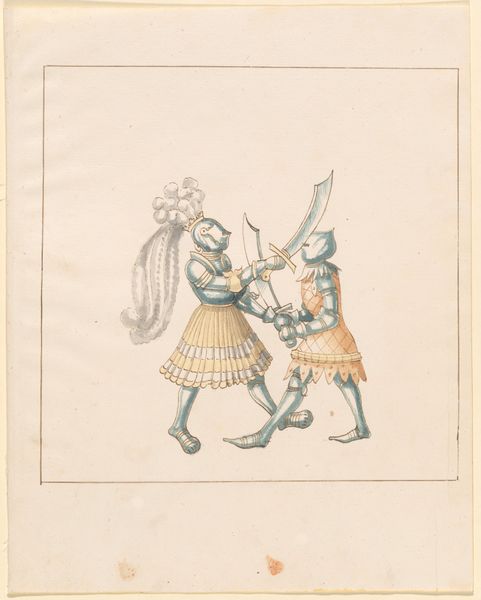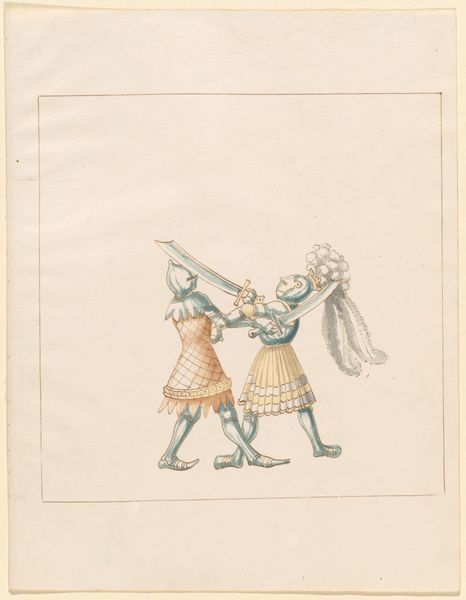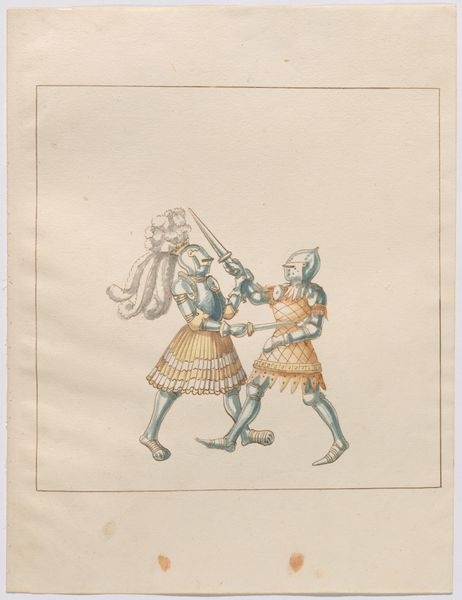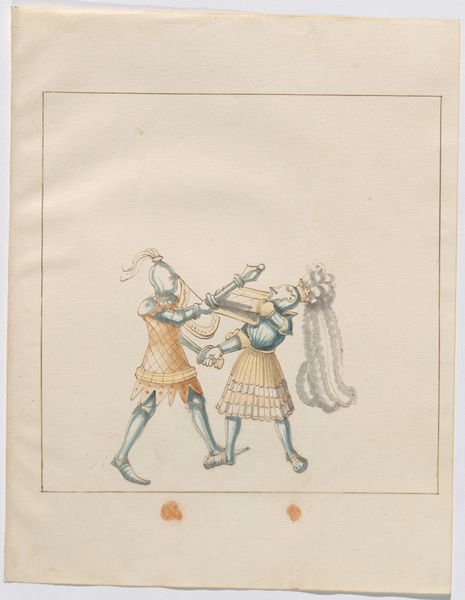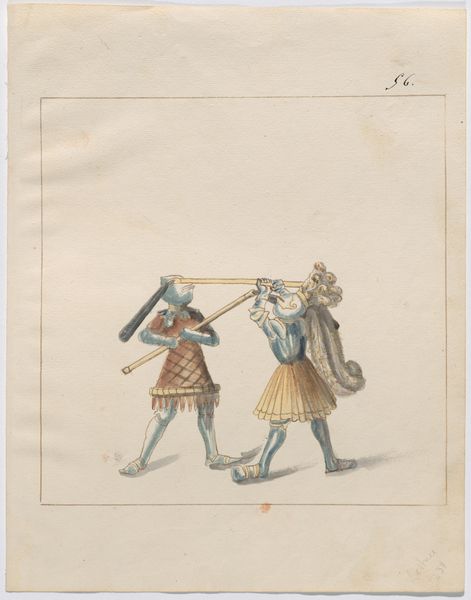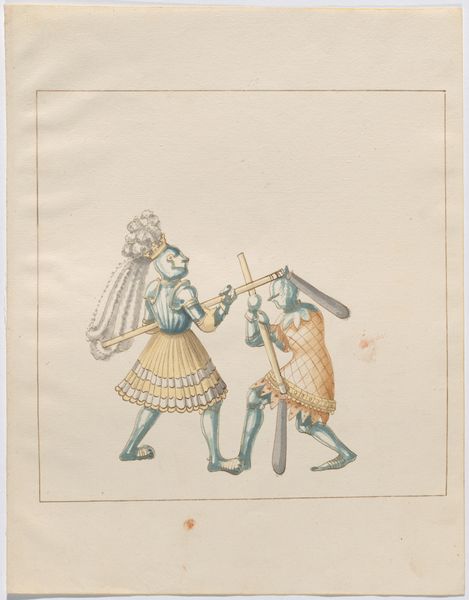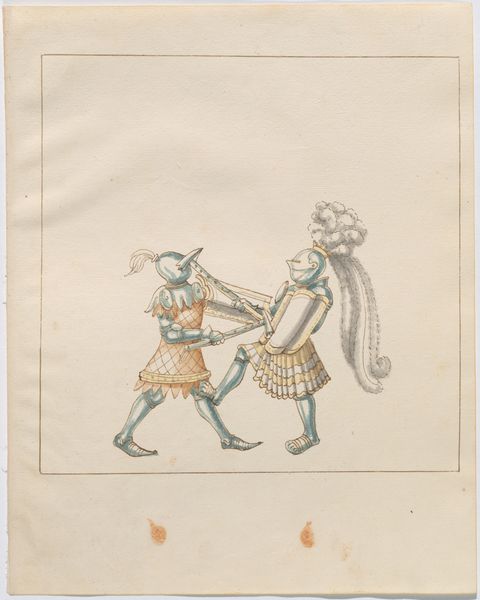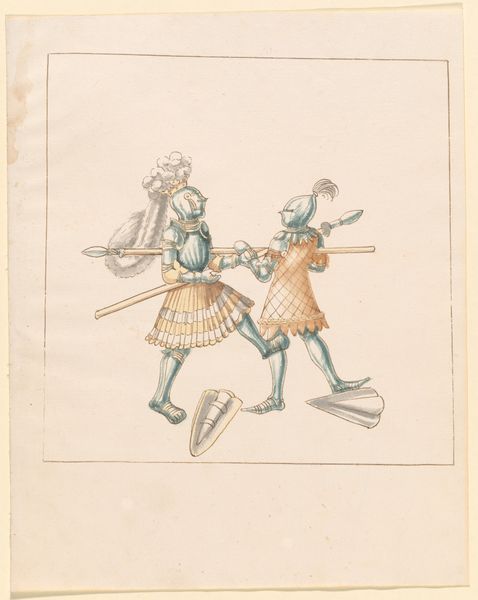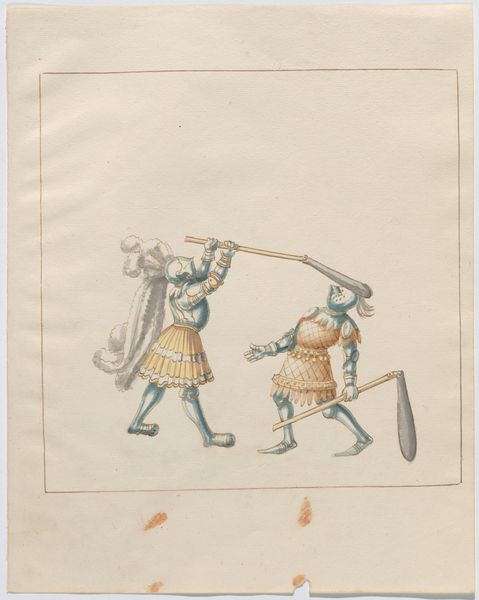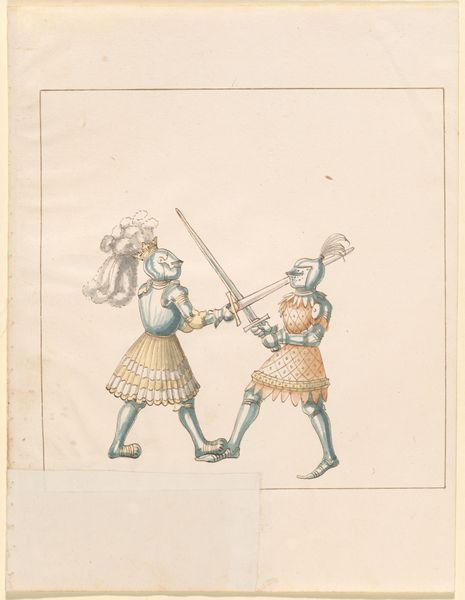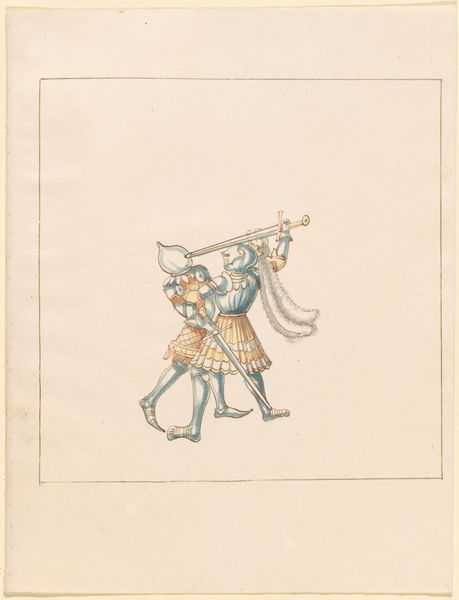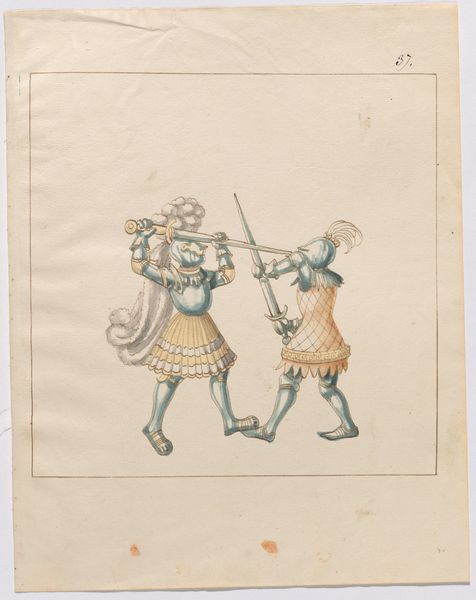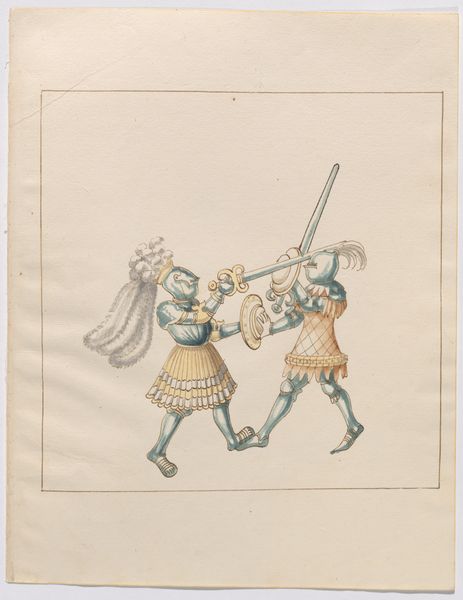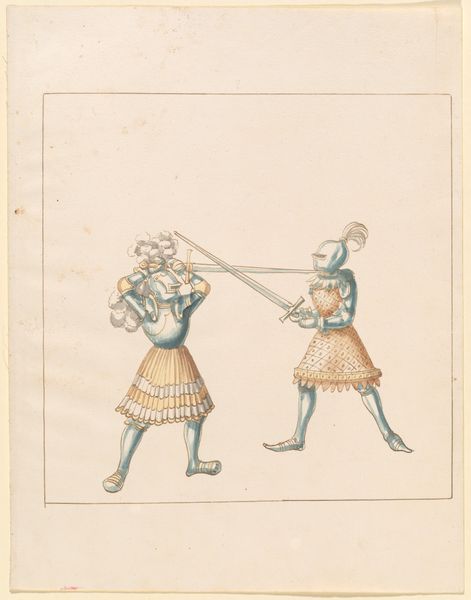
drawing, coloured-pencil, watercolor
#
drawing
#
coloured-pencil
#
medieval
#
water colours
#
figuration
#
watercolor
#
coloured pencil
#
history-painting
Dimensions: sheet: 33.9 × 26.8 cm (13 3/8 × 10 9/16 in.)
Copyright: National Gallery of Art: CC0 1.0
Editor: Here we have an artwork called "Foot Combat with War Hammers and Tartsche Shields," estimated to have been made between 1512 and 1515. It’s an anonymous drawing with colored pencils and watercolor depicting two armored figures in combat. It looks like a demonstration of fighting techniques. What can you tell me about this kind of image in its historical context? Curator: These types of combat manuals were incredibly popular during the late medieval and early Renaissance period. They’re fascinating documents of the martial culture of the time. What I find particularly interesting is the use of colored pencils and watercolor. It moves it from purely functional diagram to a piece with some artistic flair. Who was the intended audience? Editor: That's a good question! Would this have been something for military strategists, or wealthy patrons interested in the spectacle of combat? Curator: Probably both. Think of the role of the court. Tournaments weren't just about military prowess; they were elaborate displays of wealth and power. Art, even something seemingly technical like this, reinforced that social structure. The act of depicting this foot combat contributes to its significance as historical narrative, creating not just technical instruction, but visual drama. It shows us how power manifested itself in early 16th-century society. And that these spectacles continued to be popular well past the demise of the armor on the battlefields of Europe. Editor: So, beyond the immediate image of two warriors, this artwork is connected to broader issues of class, power, and the way martial arts were perceived and practiced? Curator: Exactly! And think about the artist. They might have been commissioned or had an ambition to gain notoriety by selling such images, and this gives more dimension to how images of the time circulated. It's not just about technique; it is also about how society organizes itself around power dynamics. Editor: It gives a new dimension to appreciate it. Thanks for sharing that context!
Comments
No comments
Be the first to comment and join the conversation on the ultimate creative platform.
